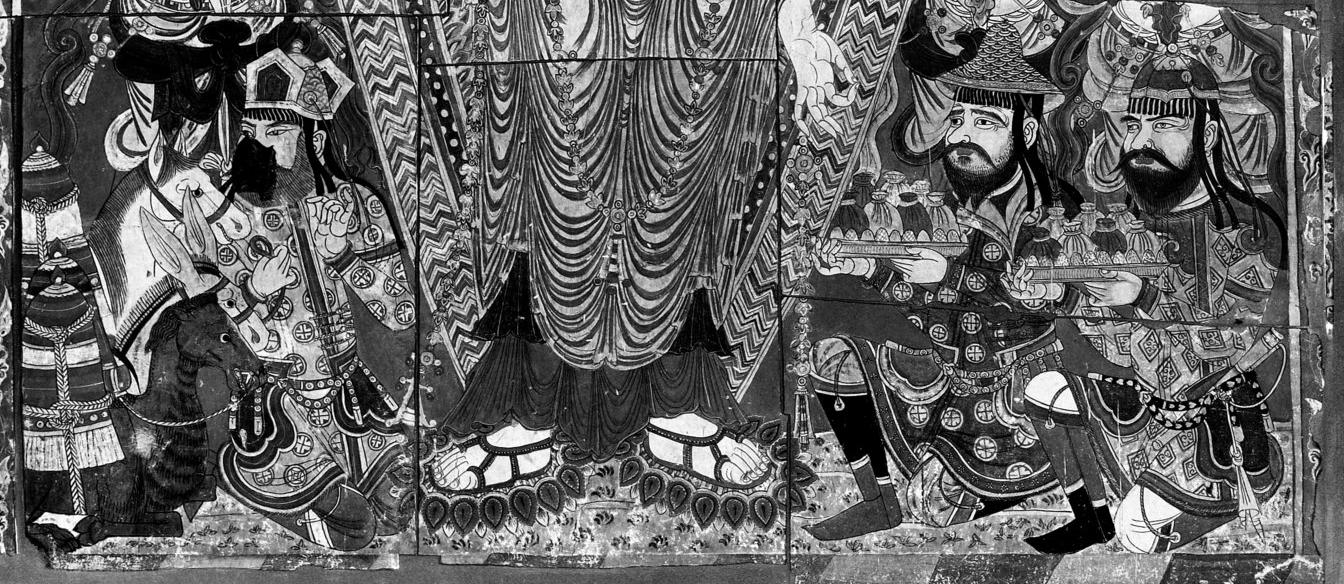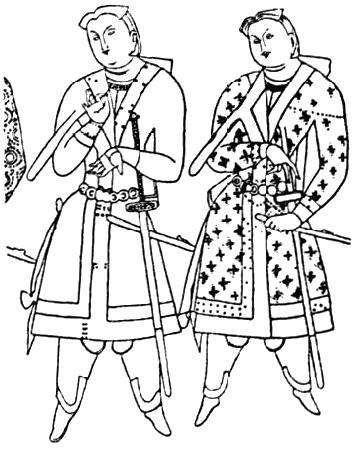
Amazon Audible Gift Memberships
Detail of Bezeklik (Bäzäklik) Fresco
Praṇidhi scene No. 6, Temple No. 9, Bäzäklik
Détail d'une fresque de Bezeklik : marchands tochariens.

Plate II from H. Seyrig, “Armes et costumes iraniens de Palmyre,” Syria 18, 1937, pp. 1-53.
“aux jambes revêtues soit de jambières soit de bottes, dont la tige monte jusque vers le genou : un oeillet percé près du bord supérieur livre passage à un cordon, par lequel cette tige était suspendue à une ceinture placée sous la tunique.”
The image from the pdf has been replaced with a better image from Plate 22, Chotscho by Albert von Le Coq
See a coloured photo of merchants in Praņidhi scene No. 6, Temple No. 9, Bäzäklik
